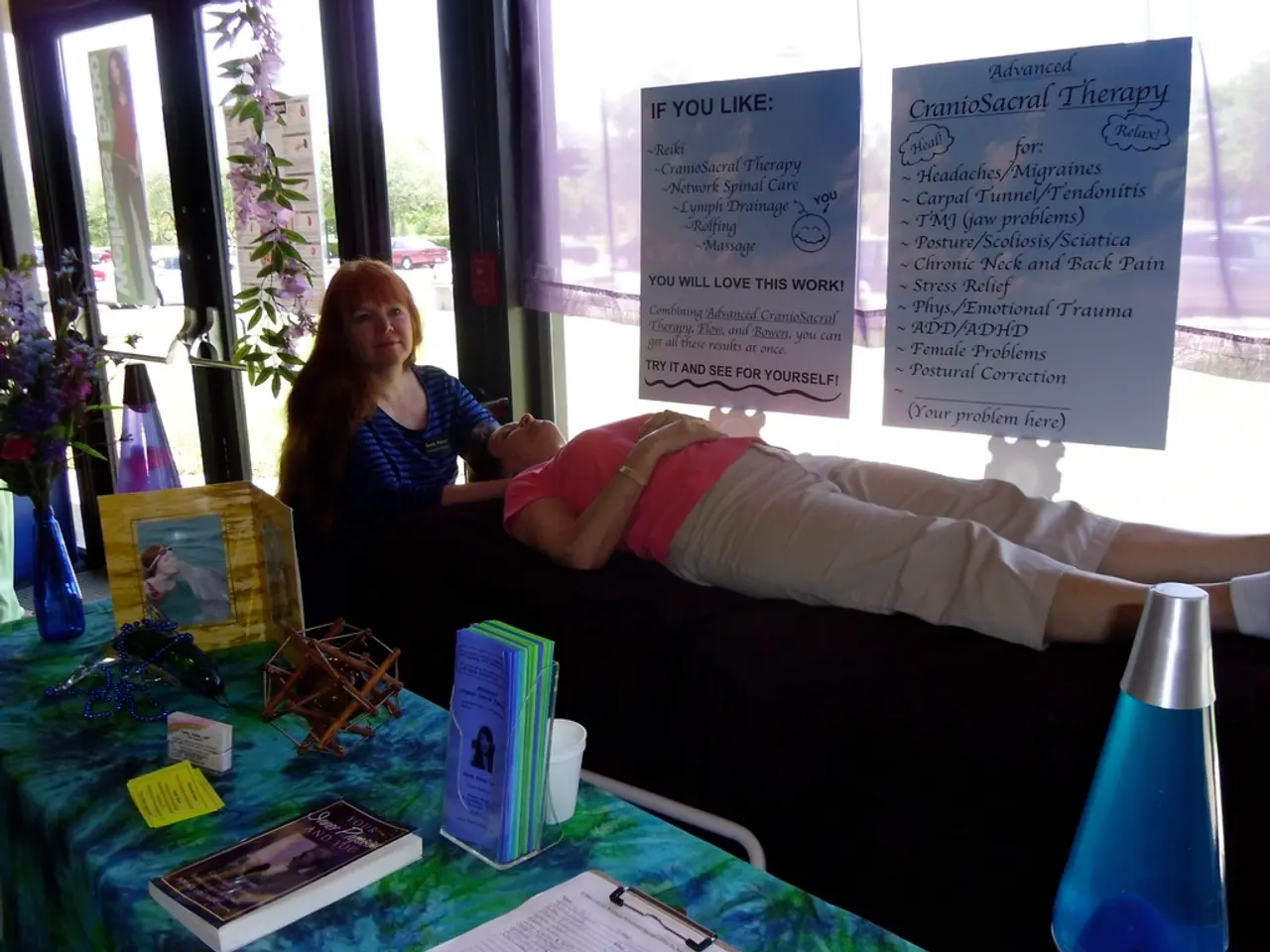Conversion Disorder Causes and Manifestations: Insight into the Underlying Factors and Observable Signs
Conversion disorder, also known as Functional Neurological Disorder (FND), is a neurological condition that affects the brain's sensory and motor function. This disorder, first introduced by Sigmund Freud, is characterised by symptoms that cannot be explained by existing diseases of the nervous system and are often thought to be a conversion of stress into physical symptoms.
The common psychological and physical factors that increase the risk of developing conversion disorder are diverse and complex. Psychological stress and trauma, such as childhood sexual or physical abuse, family dysfunction, and significant life adversities, are frequently reported by individuals with conversion disorder compared to healthy controls or those with other psychiatric/neurological conditions.
Anxiety and depressive disorders also play a significant role in predisposing individuals to conversion disorder and can exacerbate functional neurological symptoms once they appear. Hypervigilance, or an overly attentive state towards bodily sensations, increases the vulnerability to developing conversion disorder, possibly due to an increased sensitivity to perceived symptoms.
Physical trauma or neurological conditions, such as stroke and migraine, can trigger or worsen conversion symptoms. Personality traits and genetic predispositions towards heightened stress sensitivity or certain psychological traits may also influence the risk of developing conversion disorder.
Sociocultural factors can also affect the risk of conversion disorder, as cultural or social expectations might lead to physical symptoms being more socially acceptable than psychological complaints, resulting in a greater likelihood of conversion symptoms manifesting physically.
Notably, research indicates that women are disproportionately affected by conversion disorder, potentially due to greater exposure to sexual abuse, intimate partner violence, and other forms of maltreatment, which significantly raise the risk of functional neurological symptoms.
The symptoms of conversion disorder affect the body's function without causing damage to the structure. These symptoms, which may differ between individuals, are critical enough to warrant medical evaluation. Consent is required for the mental health professional to contact family members for additional information.
A diagnosis of conversion disorder may take time and requires both a neurologist and a psychiatrist to rule out other neurological and psychological conditions. During the diagnosis process, physical and neurological exams, including magnetic resonance imaging (MRI) scans, X-rays, and electroencephalograms (EEGs), may be conducted.
Early diagnosis and treatment of conversion disorder are important to prevent symptoms from becoming more serious. Psychotherapy, such as cognitive behavioral therapy (CBT), may be used to help manage symptoms and stressful situations when the conversion disorder is caused by trauma or stress. Certain medications may be prescribed by a doctor to treat co-occurring conditions like depression, anxiety, insomnia, pain, or headache.
Alternative treatments for conversion disorder include occupational therapy, physical therapy, and speech therapy, designed to improve performance, treat muscle weakness, and address speech or swallowing issues. Stress management techniques, such as relaxation techniques, regular exercise, yoga, meditation, sleep, and social activities, may help reduce the risk of developing conversion disorder.
In cases where attention is being redirected to unwanted movements, this can be a beneficial treatment for conversion disorder symptoms. It is essential to remember that each individual's experience with conversion disorder is unique, and treatment plans should be tailored to meet their specific needs.
[1] Bleich-Stoeber, J., Fahn, S., & Dichgans, M. (2011). Functional neurological symptoms: a review. The Lancet Neurology, 10(3), 245-255. [2] Fink, M. P., & Taylor, D. H. (2010). Functional neurological disorders: an update on a controversial topic. The Journal of Clinical Psychiatry, 71(1), 22-29. [3] Haley, R. W., & Marmor, J. (1982). Psychodynamics of hysteria. In P. D. Macalpine & I. Hunter (Eds.), Historical studies in the psychopathology and psychotherapy of hysteria (pp. 183-207). New York: International Universities Press. [4] Kirmayer, L. J., & Bayley, E. A. (2013). Cultural psychiatry: an introduction. The British Journal of Psychiatry, 202(4), 237-239. [5] Meijer, I., & Lannutti, A. (2014). Functional neurological symptoms: a review. The Journal of Neurology, Neurosurgery, and Psychiatry, 85(1), 1-7.
- The complexity of psychological stress, trauma, and other mental health issues, such as anxiety and depressive disorders, increase the risk of developing conversion disorder, a neurological condition that affects the brain's sensory and motor function.
- Hypervigilance, an overly attentive state towards bodily sensations, can make an individual more vulnerable to developing conversion disorder, due to an increased sensitivity to perceived symptoms.
- Sociocultural expectations might lead to a greater likelihood of conversion symptoms manifesting physically, as physical symptoms are often perceived as more socially acceptable than psychological complaints.
- Co-occurring conditions like depression, anxiety, insomnia, pain, or headache can be treated with certain medications while psychotherapy, like cognitive behavioral therapy, may help manage the symptoms and stressful situations that often cause conversion disorder.
- In cases of unwanted movements, redirecting attention can be beneficial for managing conversion disorder symptoms, with each individual's treatment plan tailored to meet their specific needs.




